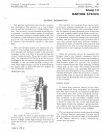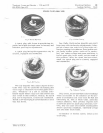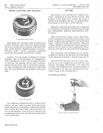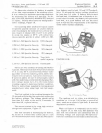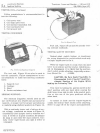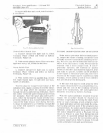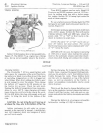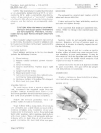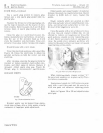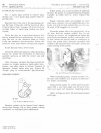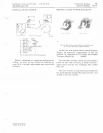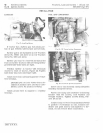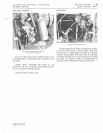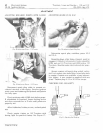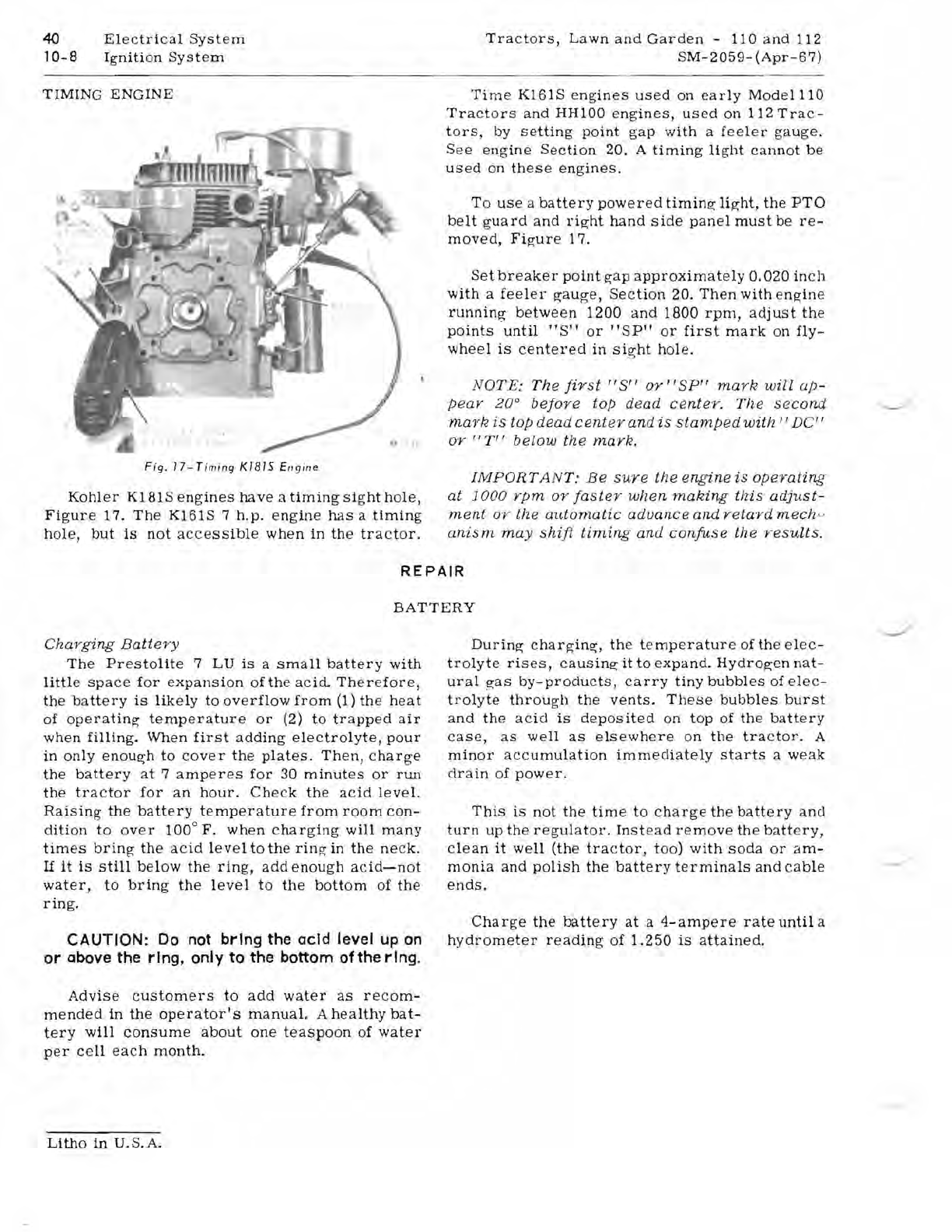
40
Electrical
System
Tractors,
Lawn
and
Garden
-
110
and
112
10-8
Ignition
System
SM-2059-
(Apr-67)
TIMING
ENGINE
Time
K161S
engines
used
on
early
Model
110
Tractors
and
HH100
engines,
used
on
112
Trac-
tors,
by
setting
pOint
gap
with
a
feeler
gauge.
See
engine
Section
20. A
timing
light
cannot
be
used
on
these
engines.
To
use
a
battery
powered
timing;
light,
the
PTO
belt
guard
and
right
hand
side
panel
must
be
re-
moved,
Figure
17.
Set
breaker
point
gap
approximately
0.020
inch
with
a
feeler
gauge,
Section
20.
Then
with
engine
running
between
1200
and
1800
rpm,
adjust
the
points
until
"s"
or
"SP"
or
first
mark
on
fly-
wheel
is
centered
in
sight
hole.
NOTE:
The
first
/I
SrI
or"
SP"
mark
will
ap-
pe
ar-
20°
before
top dead
center.
Th e
second
mark
is
top dead
cen
te
r and
is
stamped
with
I I DC' I
or
"T"
below
the
mark.
IMPORTANT:
Be
sure
the
engine
is
operating
at
1000
rpm
or
faster
when
making
this
adjust-
ment
or the
automatic
advance
and
retard
mech
e,
anism
may
shift
timing
and
confuse
the
results.
REPAIR
BATTERY
Fig.
17
-
Timing
K181S
Engine
Kohler
K181Sengines
have
a
timing
sight
hole,
Figure
17.
The
K161S 7
h.p.
engine
has
a
timing
hole,
but
is
not
accessible
when
in
the
tractor.
Charging
Battery
The
Prestolite
7 LU
is
a
small
battery
with
little
space
for
expansion
of
the
acid.
Therefore,
the
battery
is
likely
to
overflow
from
(1)
the
heat
of
operating
temperature
or
(2)
to
trapped
air
when
filling.
When
first
adding
electrolyte
,
pour
in
only
enough
to
cover
the
plates.
Then,
Charge
the
battery
at
7
amperes
for
30
minutes
or
rW1
the
tractor
for
an
hour.
Check
the
acid
level.
Raising
the
battery
temperature
from
room
con-
dition
to
over
100
0
F.
when
charging
will
many
times
bring
the
acid
level
to
the
ring
in
the
neck.
If
it
is
still
below
the
ring,
add
enough
acid-not
water,
to
bring
the
level
to
the
bottom
of
the
ring.
CAU"rJON: Do
not
brIng the acid level
up
on
or above the rIng, only to the bottom of
the
rIng.
Advise
customers
to
add
water
as
re
c
om-
mended
in
the
operator's
manual.
A
healthy
bat-
tery
will
consume
about
one
teaspoon
of
water
per
cell
each
month.
During
charging,
the
temperature
of
the
elec-
trolyte
rises,
causing
it
to
expand.
Hydrogen
nat-
ural
gas
by-products,
carry
tiny
bubbles
of
elec-
trolyte
through
the
vents.
These
bubbles
burst
and
the
acid
is
deposited
on
top
of
the
battery
case,
as
well
as
elsewhere
on
the
tra
c
tor.
A
minor
a c
cumulation
immediately
starts
a
weak
cirain
of
power.
This
is
not
the
time
to
charge
the
battery
and
turn
up
the
regulator.
Instead
remove
the
battery,
clean
it
well
(the
tractor,
too)
with
soda
or
am-
monia
and
polish
the
battery
terminals
and
cable
ends
.
Charge
the
battery
at
a
4-ampere
rate
until
a
hydrometer
reading
of
1.250
is
attained.
Litho
in
U.S.A.




